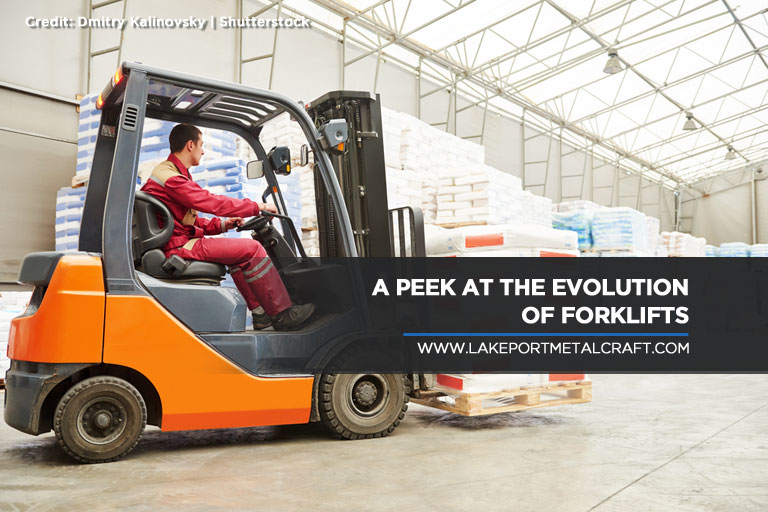Handling of heavy loads using was once difficult until the modern forklift truck was invented. It took several years of research and development to create this invaluable modern tool. Read on to learn how it was invented and to discover the different types of forklift trucks that materialized over the years.
The First Forklift
The first attempt towards making powerful handling equipment appears to have been the 2 wheel hand truck, which is handy as ever in various kinds of jobs. Early models were designed by local manufacturers with manually operated wrought iron axles and cast iron wheels. These trucks enable loads to be lifted and transported with less manual effort and probably represented the earliest application of a cantilever principle in material handling equipment.
Forklift Operation in the Old Days
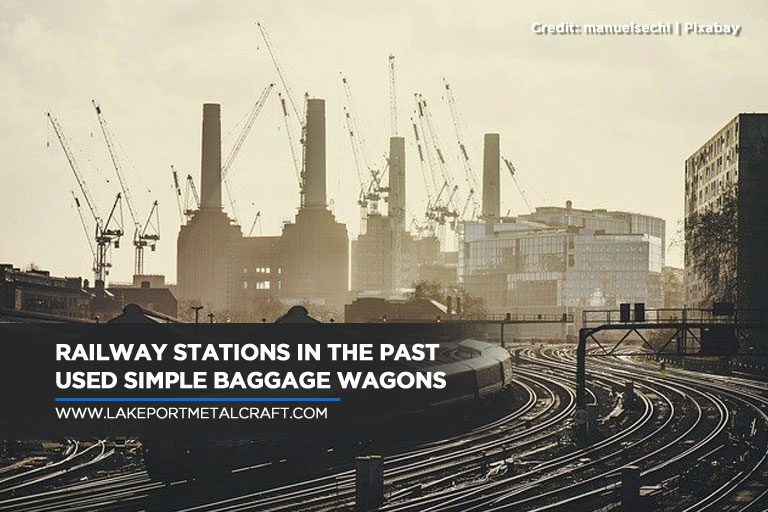
During the last century, every railway station in the United States had a manually operated 4-wheel baggage wagon. While these wagons had to be loaded manually, they could carry a much heavier weight compared to the 2-wheel truck.
Then in 1906, an official of the Pennsylvania Railroad at Altoona, Pa., attached storage battery power to their baggage wagon, creating what was considered the first powered platform truck. The controls were designed in such a way that the truck operator had to walk in front.
The concept of powered trucks became so popular that their use quickly extended to other industries. However, there was no thought of mounting elevating equipment until much later when the success of the portable elevator created the demand for it.
Forklift Service in the Early Days

The first portable elevator on record was made of wood. Developed in 1867, it was composed of a cantilever platform, uprights, and a hoist. Unfortunately, it was likely that the inventor had no idea how to promote the product because his innovation continued to remain relatively unknown for nearly 40 years.
A few elevators were invented by other people at that time. However, these varieties were considered impractical. The equipment didn’t come into general use until years later when one, made of grey iron castings and steel, was produced based on the original principles.
In 1904, revolving bases were developed to allow easier loading and tiering. While these portable elevators underwent no significant design changes, save for the addition of power, they were still extremely useful. They were typically used for application on small jobs where more costly machinery is not practical.
One of the early efforts to combine vertical and horizontal motion was in 1887. A simple truck was designed with the ability to lift its platform a few inches. This is perhaps the first application of the unit load with skids. In 1909, when the first all-steel lift truck materialized, that unit load holding eventually gained momentum, getting its start in the paper factories. During that time numerous companies went into business by producing the equipment and secured all kinds of patents. This paved the way for the common use of forklifts in warehouses.
As early as the 1900s, material handlers were toying with the idea of a truck that could lift loads. They invented a fork truck that had horizontal and vertical handling and a small crane that attached to it. Around 1913, a truck appeared featuring added electric power combined with horizontal and vertical handling capabilities. It took the form of a platform truck with a small crane mounted on it.
Powered Platform Lift Trucks
In 1913, innovators introduced a truck that added electric power features to the advantages of combined vertical and horizontal handling ability. It was in the form of a small crane mounted on a platform truck. Due to the increased production occasioned by the war, the development of powered platform lift trucks quickly followed. An earlier model required manual lifting, but 1915 saw the creation of a truck powered both vertically and horizontally. A survey done that year showed that there were 1000 powered trucks in use all over Canada and the US.
The first skids used by these vehicles were semi-live or live, being merely modified manual trucks. Flat wooden platforms were sometimes used with 4 separate legs, which had to be placed in position under its platform every time it was set down. Eventually, 2 of the legs were joined, making only 3 pieces to handle instead of 5. When the skids as we know them today were used, they were produced in several heights, sizes, and designs. The reason behind this was that a skid that fitted one truck may not fit another since the lifting ranges of the trucks were limited.
The Modern Forklift
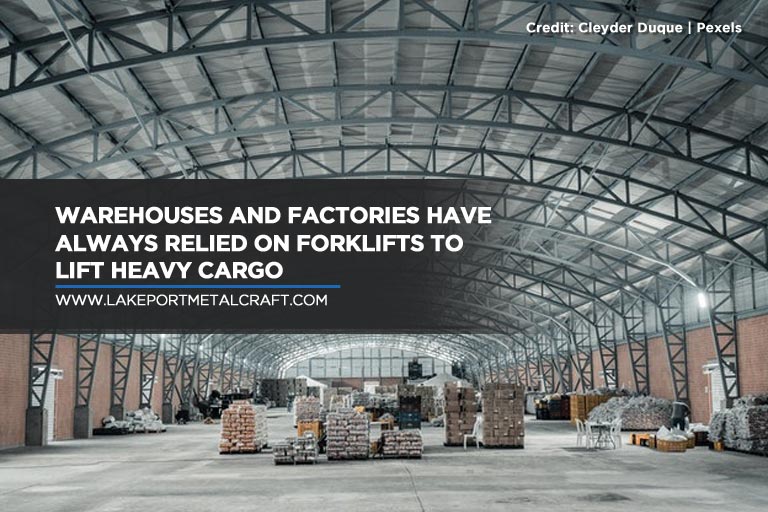
It was in 1917 when The Clark Material Handling Company introduced the Tructractor to the world, usually regarded as the original forklift truck. It was specifically designed for factories and warehouses and was the first seated counterbalanced vehicle. Since many people heard of this forklift, the company increased their production to meet the growing demand. The predecessor of the modern forklift truck had arrived.
More Powerful Forklift Trucks
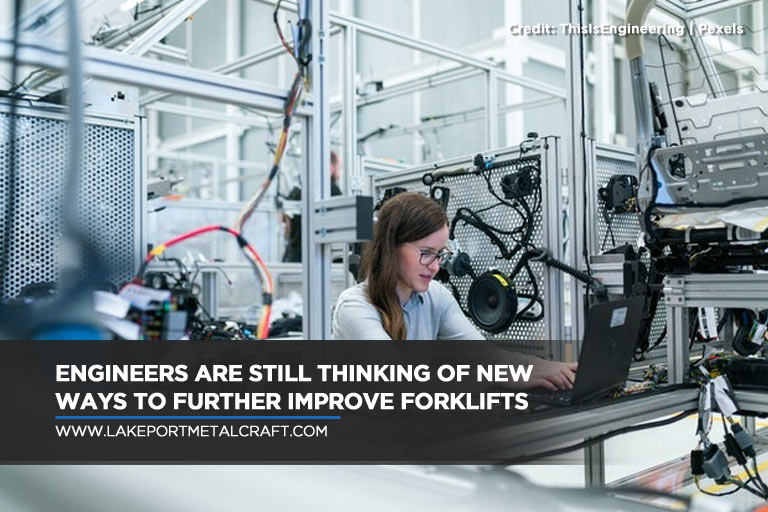
As forklift trucks became more popular, the engineers started to increase their power and added more features to them. The original forklift trucks were weak and needed improvement. Around 1920, hydraulic parts were incorporated into these trucks. Then in 1923, the vertical lifting cantilever was introduced which made the creation of the first modern forklift possible.
Warehouses were able to streamline their operations like never before. Throughout the 1920s, engineers added more electronics, tilting masts, welded joints, and shortened wheelbases to enhance strength and efficiency.
The Standardization of Forklifts and Pallets
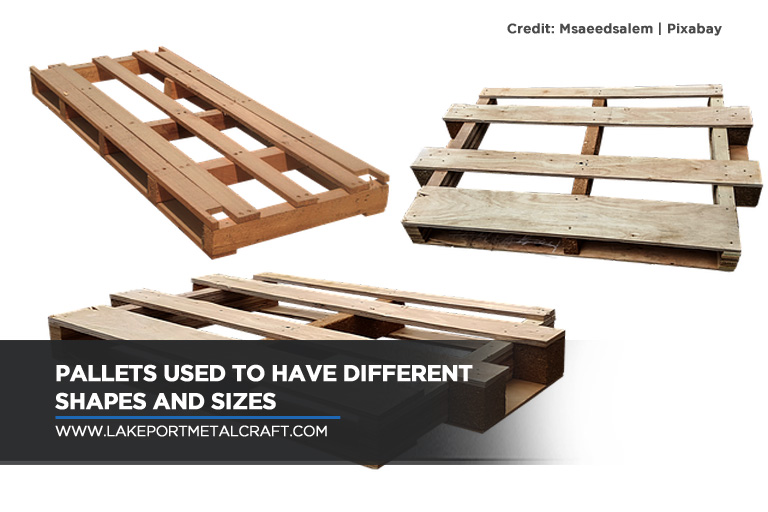
Pallets came in all sizes and shapes, with both two-faced and once-faced versions being offered in the market. As more factory owners embraced the forklift trend, the need to standardize increased. It wasn’t until the 1930s when the pallet sizes were finally standardized.
Forklift trucks also followed suit and started to standardize. Besides length, fork size, and spacing, electronic parts became uniform. Forklift trucks had become completely mainstream, and several industries saw the advantages of these trucks. Forklifts were being mass produced, prices were standardized, and much effort was focused on improving forklift technology.
Modern Forklift Technology
After several decades, forklift technology continues to advance in terms of efficiency and safety.
The modern forklifts are equipped with protective cages and backrests on masts, so the loads don’t topple backward. The forklift truck’s power source is another significant improvement. The early forklifts had internal combustion engines that run on gasoline or propane. Today, battery-powered forklift trucks have become a highly viable option over gas-powered forklift trucks. They are not only rechargeable, but they also don’t produce harmful emissions, and they have enough power to run the lift.
The invention of lithium ion batteries has created an entirely new level of efficiency for electric forklift trucks. Many trucks also feature advanced computer systems in their unit, and licensed forklift operators can manage inventory from the comfort of their seats. Forklifts play an indispensable and essential part of the modern world, especially in the manufacturing, logistics, and building industries. We would be hard-pressed to imagine our world without forklift trucks.
One of the many safety innovations for forklifts is The Backbone® — a rear guard that protects forklift operators against underride accidents and injuries. Call Lakeport Metalcraft Inc. today for The Backbone® at 416-587-5809 or email n.nopper@LakeportMetalcraft.com

